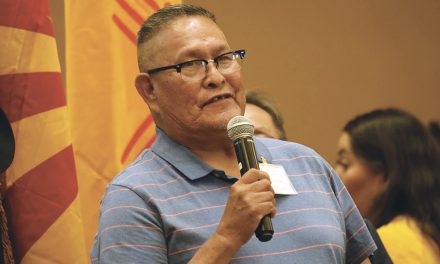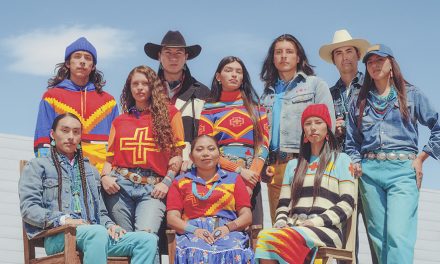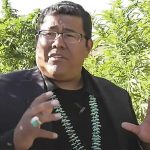
Many complaints aired over quality – or lack of – of telephone service
LOS ANGELES
Back in 1972, everyone seemed to hate the phone system on the reservation operated by Navajo Communication Company.
And many blamed the tribal government for the problems, which really irritated Harry Brown, who represented Shonto on the Navajo Tribal Council.
He told the Navajo Times that complaints about the phone system easily outpaced any other complaints he had received since the first of the year from his constituents.
Everyone thought that the phone company was owned by the Navajo Tribe but it was actually owned and run for the past decade by a company in Texas. Officials there decided where to build telephone lines and how much to charge.
It is probably difficult for people now to realize just how bad the phone system was 50 years ago. The system may have contributed to the deaths of dozens of reservation residents during the 1970s.
Phone service in 1972 existed primarily in the big governmental centers such as Shiprock, Tuba City, Crownpoint, Chinle and the Window Rock area.
Smaller communities, such as Kayenta, Dilkon and Shonto had phone service only around the chapter house or within the main community of the chapter.
This was 30 years before cell phones became available in the reservation and each year dozens of reservation residents died because family members would have to travel 30 miles or more to find a phone to call for an ambulance or the police. As a result, it often took an hour or more for help to arrive.
So, it wasn’t usual for chapters to pass resolutions demanding that the phone company provide service to the more remote parts of the reservation.
But having phone service didn’t reduce the complaints, said Brown.
The average phone customer paid a basic rate of $45 a month. Since any call outside your community was long distance, these costs also added up.
Because of these high prices, said Brown, the Texas company was taking millions of dollars off the reservation annually in profits and no one, not even the tribal government, had any say in how much they charged.
“Maybe the solution is for the tribe to take over the phone company and run it ourselves,” said Brown.
A few days later, Wilbur Atcitty, who was then a political adviser and assistant to Navajo Tribal Chairman Peter MacDonald, said for most of this century the phone service was operated by the BIA and was set up primarily to provide a way for federal officials to talk to their superiors in Washington, D.C.
In the early 60s when reservation residents began clamoring for better phone service, the BIA decided it was time to get out of the phone business. So Paul Jones, who was chairman at the time, was given the opportunity to take it over at no cost to the tribe.
Jones turned the offer down, saying it would cost tens of millions of dollars to bring phone service to all communities on the reservation. Bringing it to the rural areas would cost even more.
He declined the offer and the BIA accepted bids and finally sold it to a company in Texas who established a program to get phone service to as much of the reservation as it could financially.
Jones and MacDonald realized that if the tribe owned the phone system it would end up costing millions of dollars a year and would lead to year-round criticism from those who had no phones as well as those who thought the service cost too much money.
A couple of days after Brown’s statement appeared in the Times, Navajo Communications put out a press statement refuting claims that it was making millions of dollars in profits.
The higher costs – almost twice what phone customers paid off the reservation – was justified by the extra costs the company experienced in providing service to areas with small populations.
While the company refused to give out exact figures, company officials said Navajo Communications lost money throughout most of the 60s and was still using most of its net profits to expand services to other areas of the reservation.
People in the news
- The tribe’s Fish and Wildlife Department implemented a trophy hunt during deer season to promote hunting on the reservation.
The first buck deer rifle trophy was won by Dennis Lee whose buck came in at 299.5 pounds.
- Catherine Millie, one of the head teachers at the Greasewood Boarding School, was interviewed about the success the school was having this year by implementing team teaching at the school.
“We were sitting around one day making plans for next year when I suggested we tear down the walls between our rooms,” she said.
The change resulted in a sharp increase in improvement in the attitude of both students and teachers to class work.
- Sgt. Kenneth W. Hernasy, son of Mr. and Mrs. Charlie Hernasy of Fort Defiance, received his second Army commendation medal with oakleaf cluster.
He is currently with the National Guard’s 19th Special Force Group, based in Durango, Colorado. He is attending Fort Lewis College.








 Highway 264,
Highway 264, I-40, WB @ Winslow
I-40, WB @ Winslow